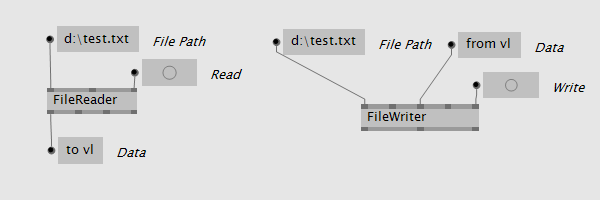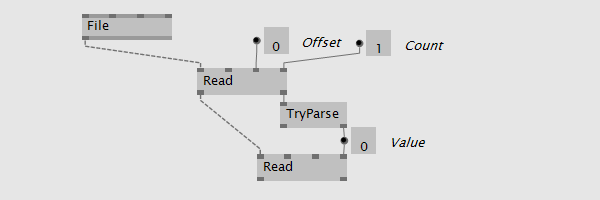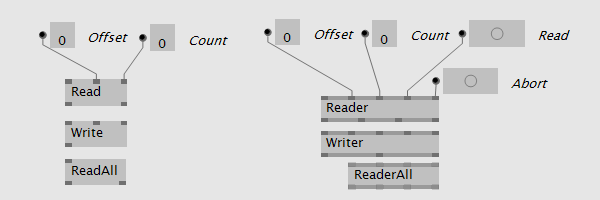Let me present to you: File IO
previously on VL: vl-progress-report-3
on the way to catch up with what you know and need from vvvv, the first choice for expanding VL core library was to work on file thingies. The following should look extremely familiar and probably quite unexciting for you:

These guys do exactly what you would expect them to do: read from file, respectively write to a file. as a convenience nodes you have string versions, the standard ones give you bytes.
since it's 2016, these nodes do their work asyncronously, hence these output pins, which keep you informed about the working status, giving you the opportunity to draw some nice loading animation.

it wouldn't quite feel like vvvv if the curious ones could not actually peek inside the node to see what's going on

looks a bit overdone for such a simple thing, right?
the motive for the splitting up into File and the actual IO operation has a couple of (imho) good reasons:
chaining operations

no need anymore to load the whole file and then decide what to do with the content. you can for example parse the header of a video file, look up some frame offset and directly do a partial read of just the blob you are interested
control over file access
there are a bunch of ways to access files. now you can actually control all of that. one reason might be security, since you can decide, whether anyone else can read or write or even delete the file at the same time. you can set it to forcibly create a new file, so you don't accidentally overwrite something existing.
another reason is performance, you are welcome to dive into the deeps of the web to find out which combination of modes causes which thread to do the work. we tried to set the defaults for best performance for parallel reading.
stream stream stream

the File node actually returns the FileStream. so all these operations can instantly be used with anything else, that is a stream (which is a lot of things in the .net world)
- 1
anonymous user login
Shoutbox
~2d ago
~9d ago
~9d ago
~10d ago
~23d ago
~1mth ago
~1mth ago
~1mth ago
~1mth ago
~2mth ago


Reading this to the very end (2 lines) is most rewarding.